Part II: The Cotswolds and Bath
On Saturday, July 1, we packed our bags and drove west toward The Cotswolds. Along the way, we stopped at a charming town called Turvey, and we also stopped at a rough town with a rough name: Bloxton. Driving wasn’t difficult, despite England’s notorious “roundabouts” (rotaries); after struggling to drive in a congested city, driving through the countryside seemed effortless. In the afternoon, we arrived at our destination: Stow-on-the-Wold, a small town built on top of a hill in the center of The Cotswolds.

Like most English towns, Stow is well-preserved — no malls, no Walmarts, no sprawling suburbs. This field is near the town center.
The Cotswolds was once a prosperous sheep-farming region, but in the 19th century, progress passed it by; the changes wrought by the Industrial Revolution weren’t felt in The Cotswolds. As a result, The Cotswolds became a sparsely-populated region of quaint old villages. The Cotswolds are famous for their honey-colored stone buildings, which were constructed from the limestone that is abundant here.
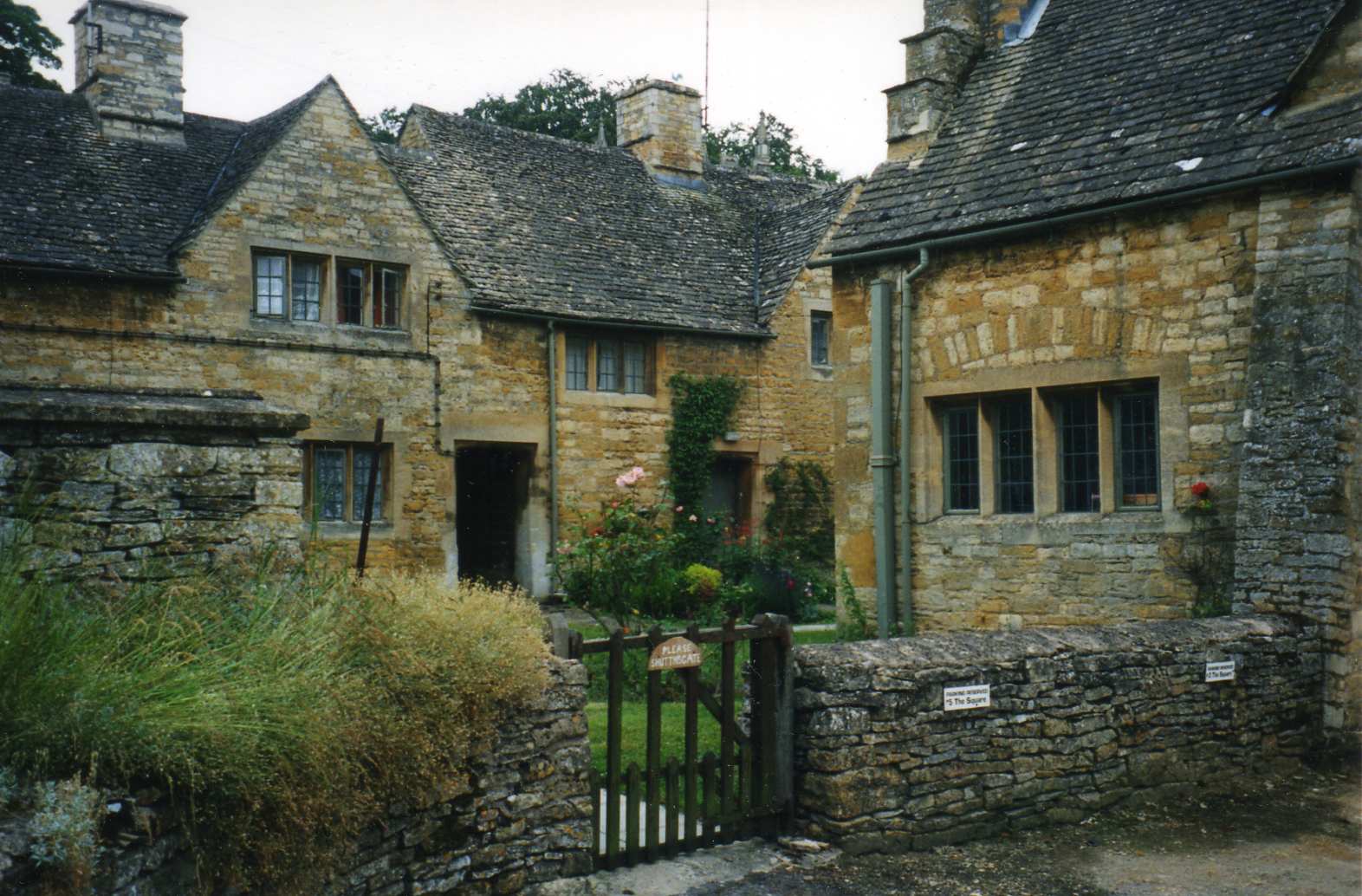
Stow-on-the-Wold boasts the oldest hotel in England — The Royalist Hotel, which dates back to the 10th century. Stow’s ancient buildings are prone to sag; if you placed a ball on the floor of one of Stow’s buildings, it would roll to the edge of the room. We stayed in a hotel called The White Hart. In medieval times, many travelers were illiterate, so hotels wrote their names with pictures rather than words. This custom has survived, and our hotel had a sign with a picture of a white hart. Hotels in different towns often have the same names; for example, every town has a hotel called The King’s Arms, and names like The Red Lion and The Queen’s Head are also common.
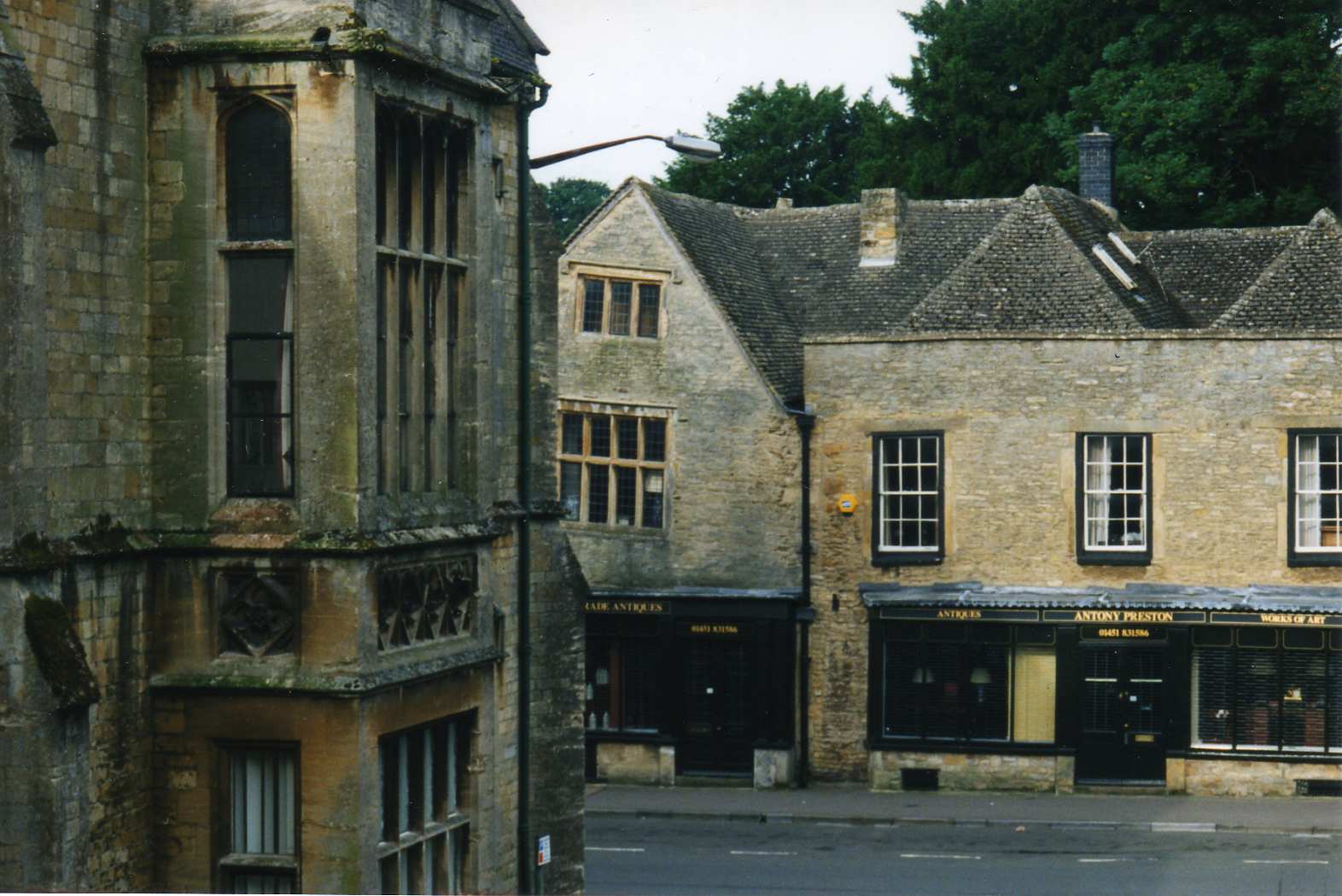
“If you placed a ball on the floor of one of Stow’s buildings, it would roll to the edge of the room.”
On Sunday, we walked to the nearby village of Broadwell, and ate a picnic lunch near the church. We never tired of visiting England’s country churches, quiet places full of historical and architectural interest. A Broadwell resident regaled us with local legends, and we learned more about Broadwell from a pamphlet in the village church; such pamphlets can be found in many English churches. The Broadwell church, like most English churches, is surrounded by a small graveyard. Many of the tombs in this graveyard, like other Cotswold tombs, are adorned with images of wool, testifying to the region’s wool-producing past.
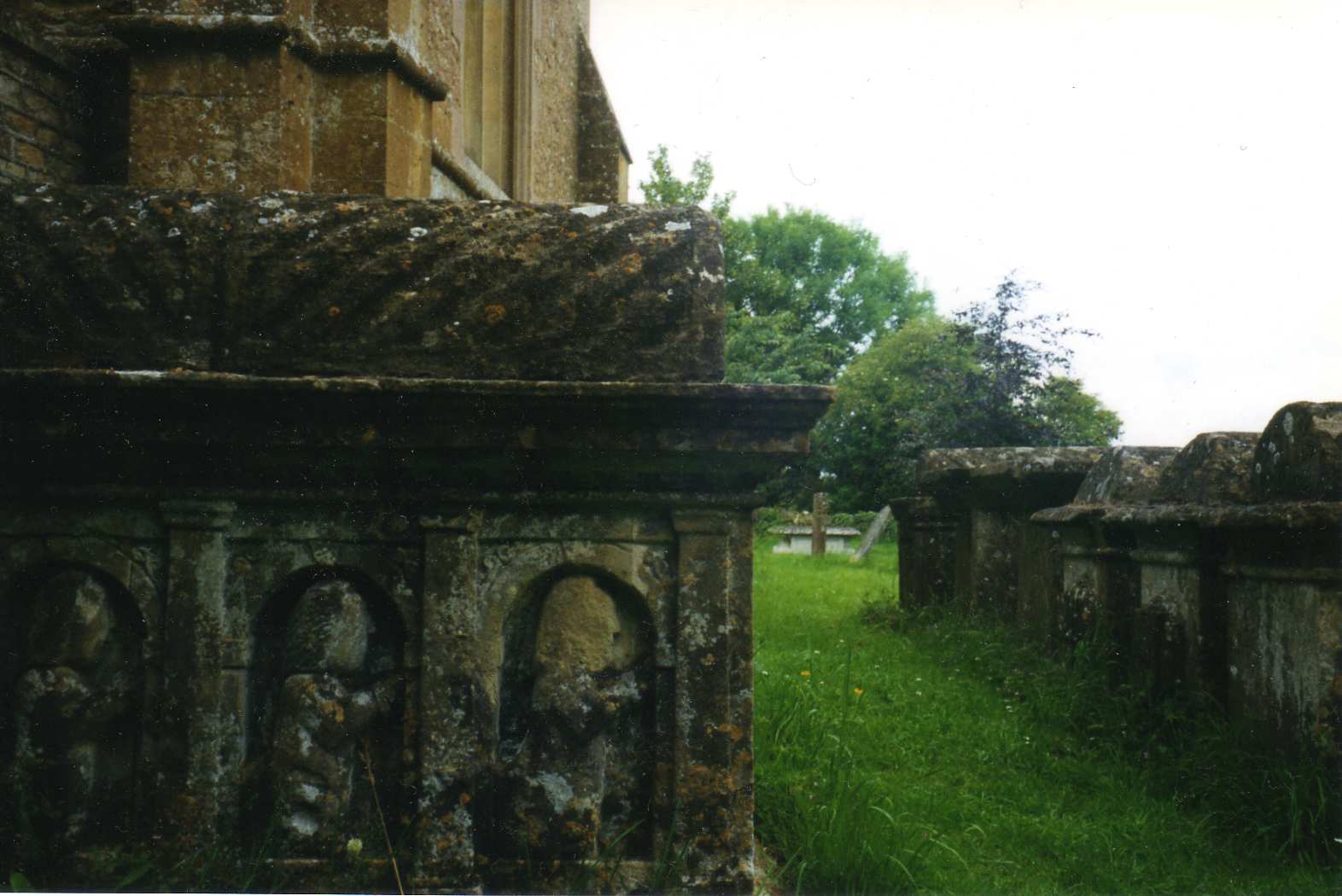
In the afternoon, we drove to the Slaughters (Upper and Lower Slaughter), and walked the short trail that runs between them. This picturesque pair of villages is among the foremost attractions of The Cotswolds, and we encountered several groups of tourists on the trail. The Cotswolds are famous for their walking paths; the region is crisscrossed by hundreds of miles of paths, many of which run through farmland.

On Monday, we drove to the village of Great Rissington, then walked to Little Rissington, and again lunched in the churchyard. Britain’s Royal Air Force (RAF) had a base in the area, and many RAF members are buried in the Little Rissington churchyard; a stained-glass window in the church commemorates the RAF. My mother was impressed by the needlepoint cushions in the church. From Little Rissington, we walked through fields and across the Windrush River, before finally reaching our destination, the village of Bourton-on-the-Water. It was a scenic walk: a checkerboard of brightly-colored fields reminded us of a van Gogh landscape, and we encountered many flocks of sheep and herds of cows. Bourton-on-the-Water was crowded with tourists, including some Japanese tourists who were taking pictures of the charming stream that flows through Bourton. Cotswold streams are clean and clear, and fish are easy to spot.
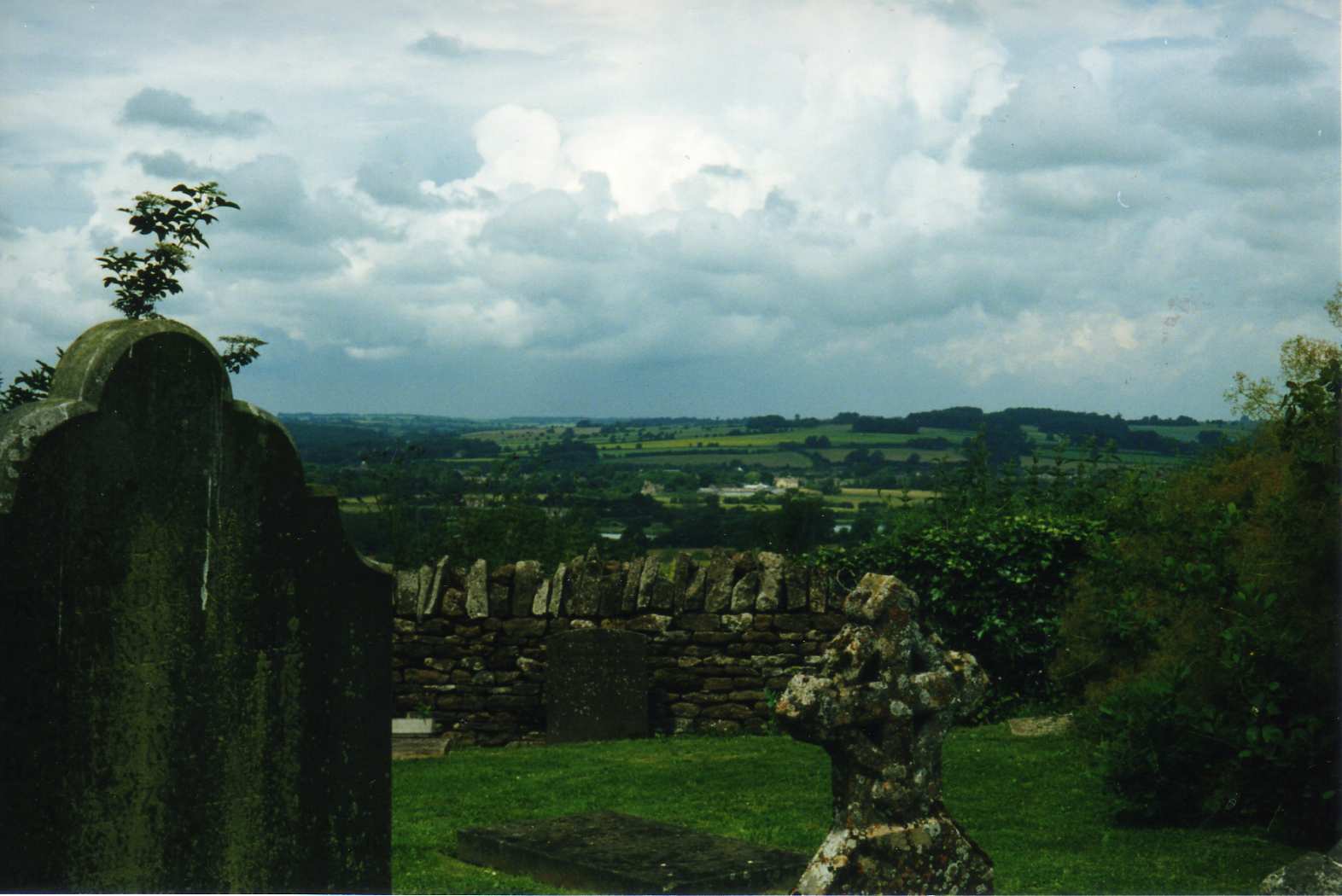
Little Rissington churchyard

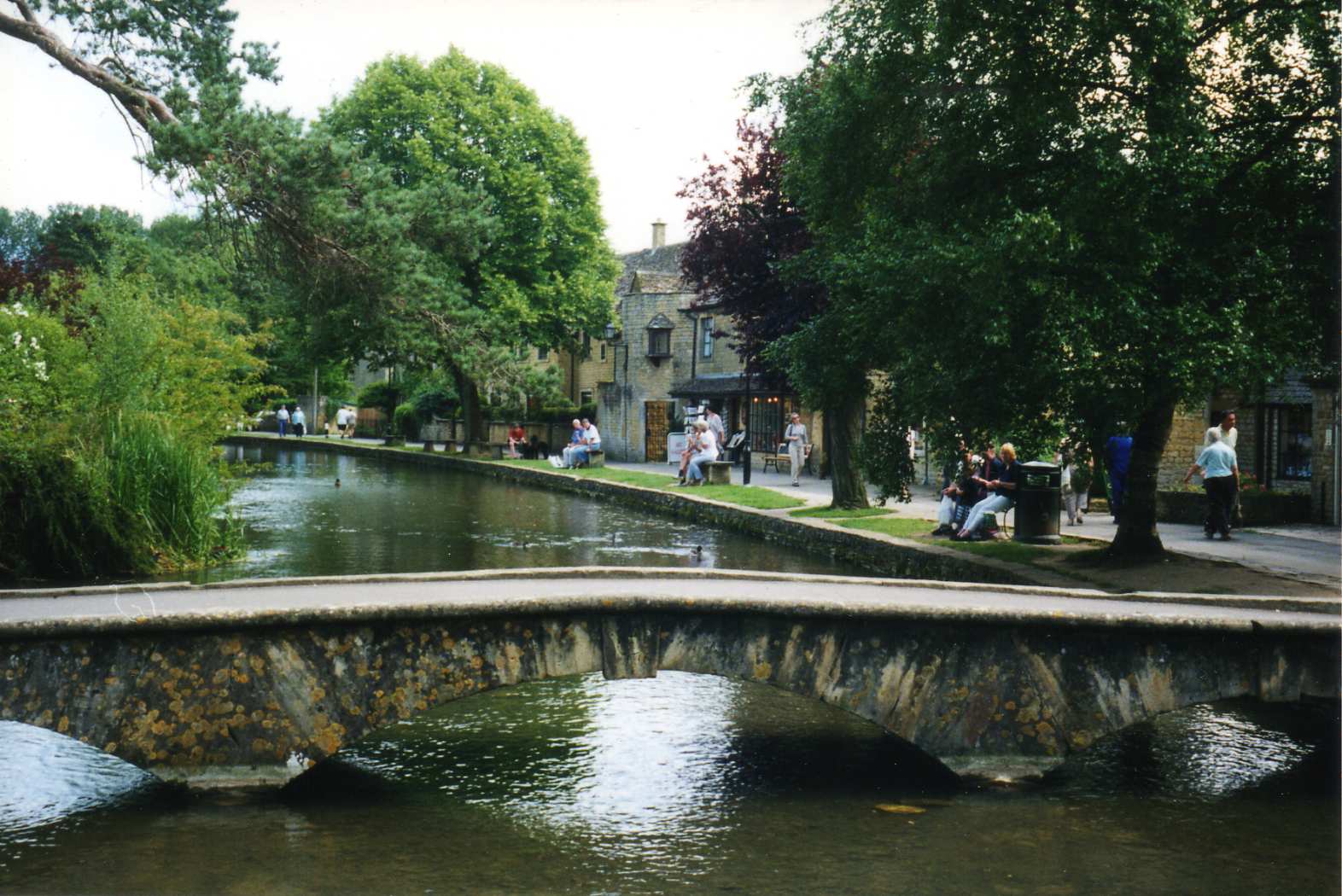
On Tuesday, we took a day trip to Oxford. Since we had enjoyed our walking tour of Cambridge, we took a walking tour of Oxford. Our guide was a Swiss woman who had evidently worked hard to learn about the history of Oxford. She said that the Romans had bypassed Oxford because it was too wet and swampy; it’s located at the confluence of the Cherwell and Thames rivers. When the rivers flood, the water rises around Christ College, whose architectural style is borrowed from the watery city of Venice. John Ruskin, the eloquent advocate of the Venetian Gothic style, was an Oxford professor, and his influence is apparent at the University Museum and the Bridge of Sighs, as well as Christ College. Ruskin’s passion for Venetian architecture seems to have had an impact on Cambridge as well as Oxford; Cambridge also has a replica of Venice’s Bridge of Sighs.

The Bridge of Sighs, St. John’s College, Cambridge University

Like Cambridge, Oxford is composed of independent colleges. The criteria for admission are not as egalitarian as those used by American colleges; admission is based largely on tests of knowledge (called “A-levels”), whereas admission to American colleges is based on a variety of factors, including tests of aptitude (not knowledge), and “affirmative action,” or preferential treatment for minorities.
Oxford University traces its history back to the 12th century, when students came to study at the Augustinian abbey. Several of Oxford’s colleges (Lincoln, Exeter, etc.) were established to educate students from a particular region. Unfortunately, we had only a few hours in which to explore Oxford, so we never felt at home there, as we had in Cambridge; such is the plight of the day-tripper.
On Wednesday, we drove to Burford and Chipping Campden, two classic Cotswold towns. Though I was close to being satiated with Cotswold towns, I enjoyed seeing the main streets of Burford and Chipping Campden, and I also enjoyed seeing their churches.
On Thursday, our last day in The Cotswolds, I arose at 5 a.m., determined to explore the countryside on foot one last time. The streets of Stow were silent and deserted, except for some postal workers. I took the footpath that leads to Bourton-on-the-Water, about four miles from Stow. I often felt that I was walking through someone’s backyard; luckily, no dogs barked or bothered me. The air was misty, foggy, as if the sun weren’t sure if it wanted to get out of bed.
I crossed several pastures. In one, the cows were spaced evenly, and my passage aroused in them only mild curiosity. In another, the cows were collected in a bunch, and my passage inspired them to go thundering over to the very gate that I was aiming for. The close proximity of several hundred tons of quadruped can be rather unnerving for one who isn’t used to livestock. I tried to disperse the crowd with commands, but my rhetoric left them unmoved. Eventually, I clambered over a fence, and left the herd behind. On a walk like this, your map always seems a bit vague, you have to guess where to go, and sometimes you guess wrong, and end up off the trail; such was my lot this morning. Eventually, however, I reached Bourton, and then caught a bus back to Stow.

“The close proximity of several hundred tons of quadruped...”
After checking out of The White Hart, we drove toward Bath. This was one of our most pleasant country drives, though finding our hotel in Bath was one of our most difficult city drives. On the way to Bath, we made a detour to see one of England’s Roman ruins, Chedworth Roman Villa. The weather was sunny (unusual for England) as we wound our way along narrow country roads to the villa. The villa was originally a square-shaped complex of about 40 rooms. Since it was discovered in the 19th-century, about 15 rooms have been unearthed. The highlight is a dining room with a mosaic floor, a substantial part of which can be seen today. Also of interest is a cistern, fed by a spring, where Romans once paid their respects to a water god. A museum displays coins, utensils, and other objects that were dug up around the villa. The villa is situated at the edge of a charming, unspoiled valley. Visiting such a place brings the Romans before you, and whets your appetite to learn more about Roman Britain.
Our room in Bath had a good location, so we were able to walk around the city quite easily. I made forays to the markets, and brought food back to the room.
Bath’s hot springs were popular with the Romans, who built a bath complex here. When the Romans left, their baths were gradually buried by silt from the nearby Avon river. (I asked a Bath librarian, is this the same Avon River that flows through Stratford? No, different river. “Avon” means river in Anglo-Saxon, so many English towns have an Avon River, just as many English towns have a King’s Arms Hotel.) In 1755, after being buried for centuries, the Roman baths were rediscovered, and people realized that there was a city beneath their city. Today, the Roman baths are one of the city’s chief tourist attractions.
In the 18th century, people believed that Bath’s hot springs could cure various ailments, and Bath became a fashionable resort, depicted in the works of Jane Austen and other writers. Today, Bath’s fame rests largely on its grandiose 18th-century buildings, constructed in the Palladian style (also called the neo-classical style, or the Georgian style). Bath was designated a World Heritage Site by UNESCO.
Bath’s architecture struck us as chilly, formal, repetitive, a tasteless display of wealth and power. Ruskin, who taught us the virtues of Gothic architecture, also taught us the vices of Renaissance architecture. How Ruskin must have loathed Bath! Although Bath may not be charming, it has much to see and much to criticize, and I’m glad we went there. We especially enjoyed Bath Abbey (built around 1500 in the Gothic style), and the Botanical Gardens.
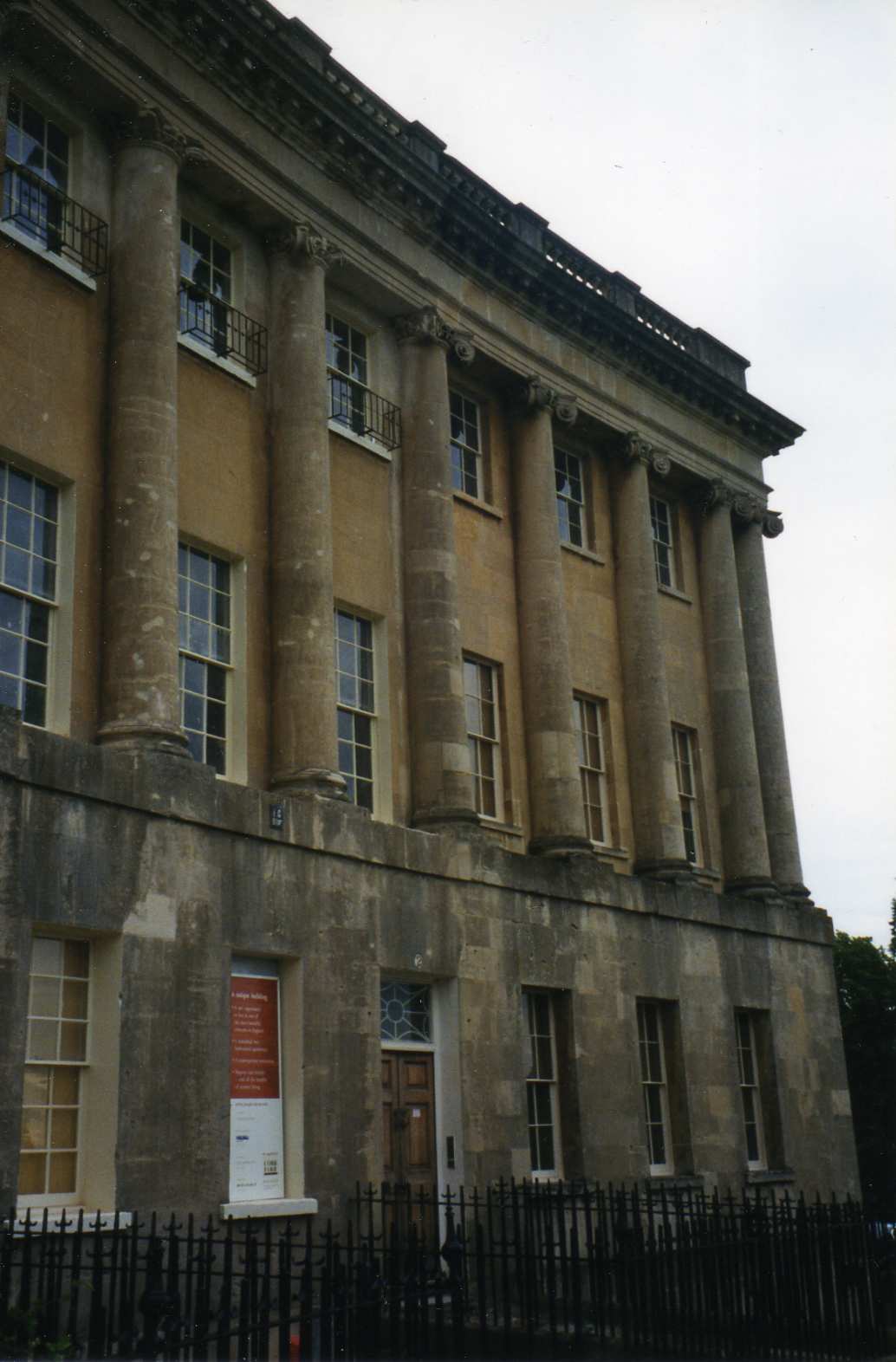
“Bath’s architecture struck us as chilly, formal, repetitive...”
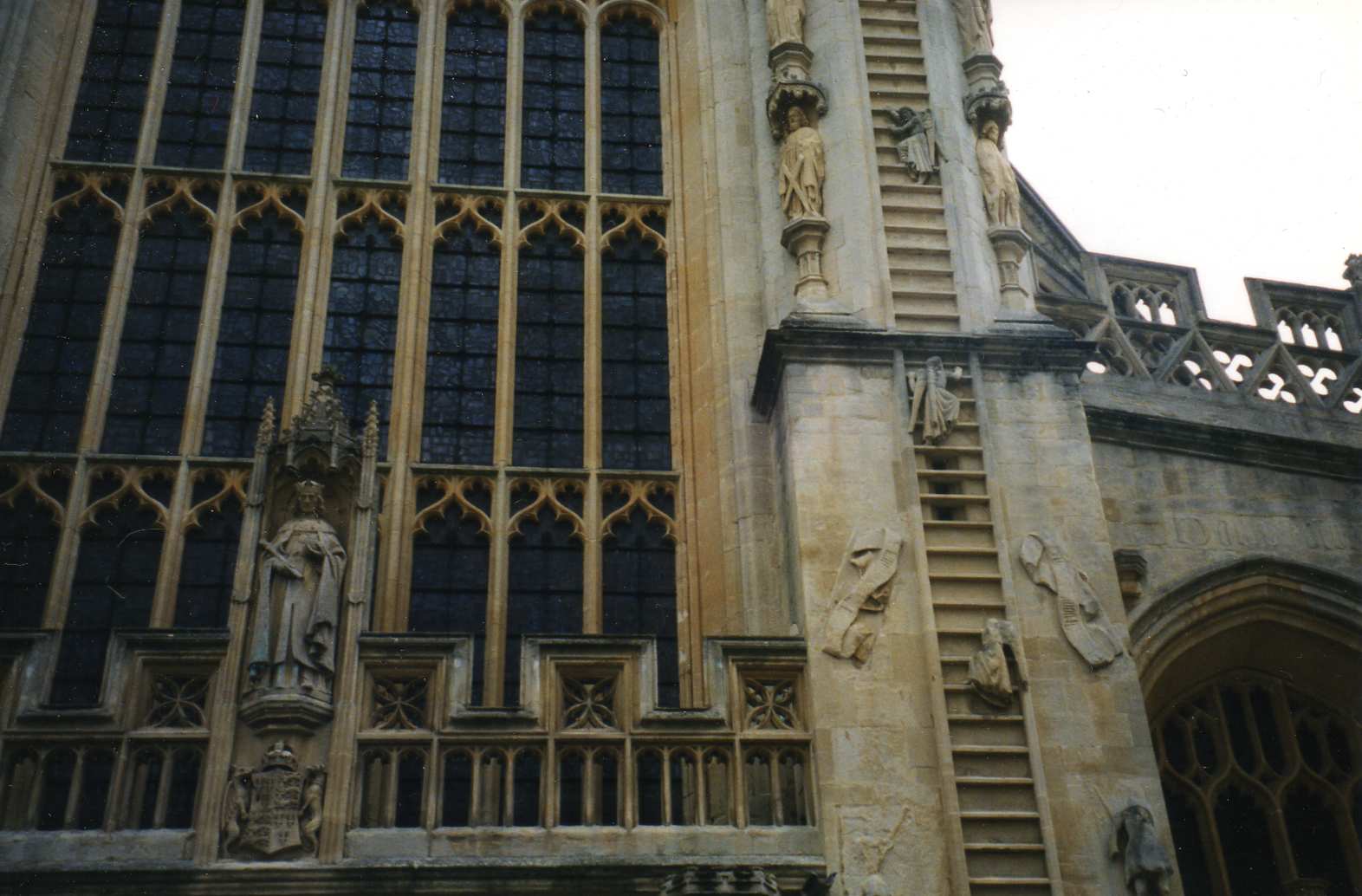
Bath Abbey. Note the angels ascending the ladder. According to Frommer’s, “When Queen Elizabeth I came to Bath in 1574, she ordered a national fund to be set up to restore the abbey [which had been damaged during the Reformation]. The west front is the sculptural embodiment of a Jacob’s Ladder dream of a 15th-century bishop.”
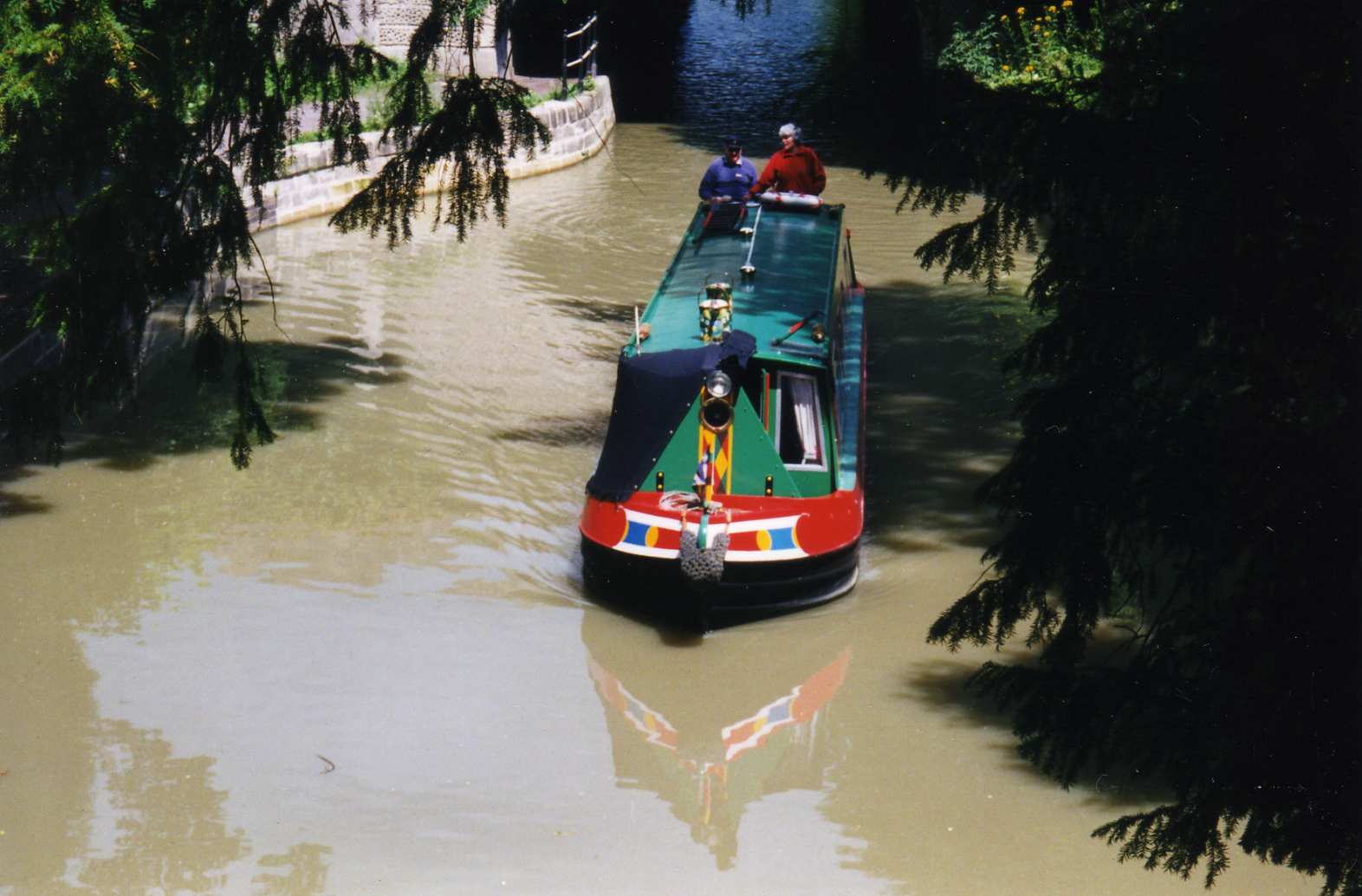
Tourists can barge through Bath.
While we were staying in Bath, we took a day trip to Wells, a small town that is the seat of one of England’s great cathedrals. This was a very successful day trip, unlike our day trip to Oxford. Wells is full of interesting sights, and doesn’t overwhelm you with traffic and crowds. The cathedral is rich in architectural beauty and historical interest; we enjoyed the cloisters, the mechanical clock (on which jousting knights appear each hour), the Bishop’s Palace (surrounded by a moat and high walls), the Chapter House (built in the 13th century), and Vicars’ Close (said to be the oldest residential area in Europe). The antiquity of the tombs and monuments inside the cathedral is nothing short of awe-inspiring.
Next day, we drove from Bath to Gatwick Airport, and boarded a plane bound for Boston. We brought home many stories, and many memories, and we looked forward to revisiting England in the future.
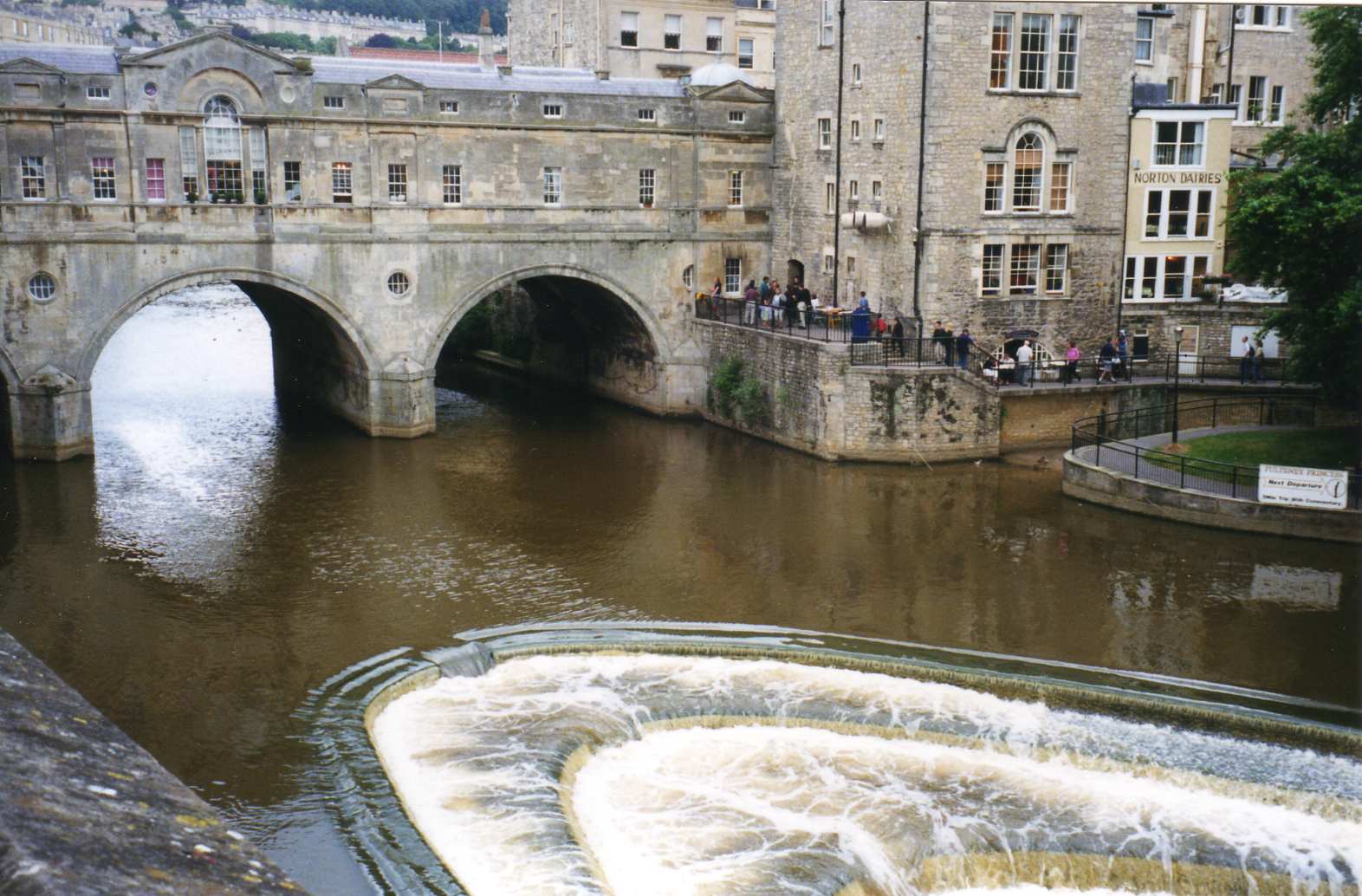
Avon River, Bath
© L. James Hammond 2003
feedback
visit Phlit home page
make a donation via PayPal